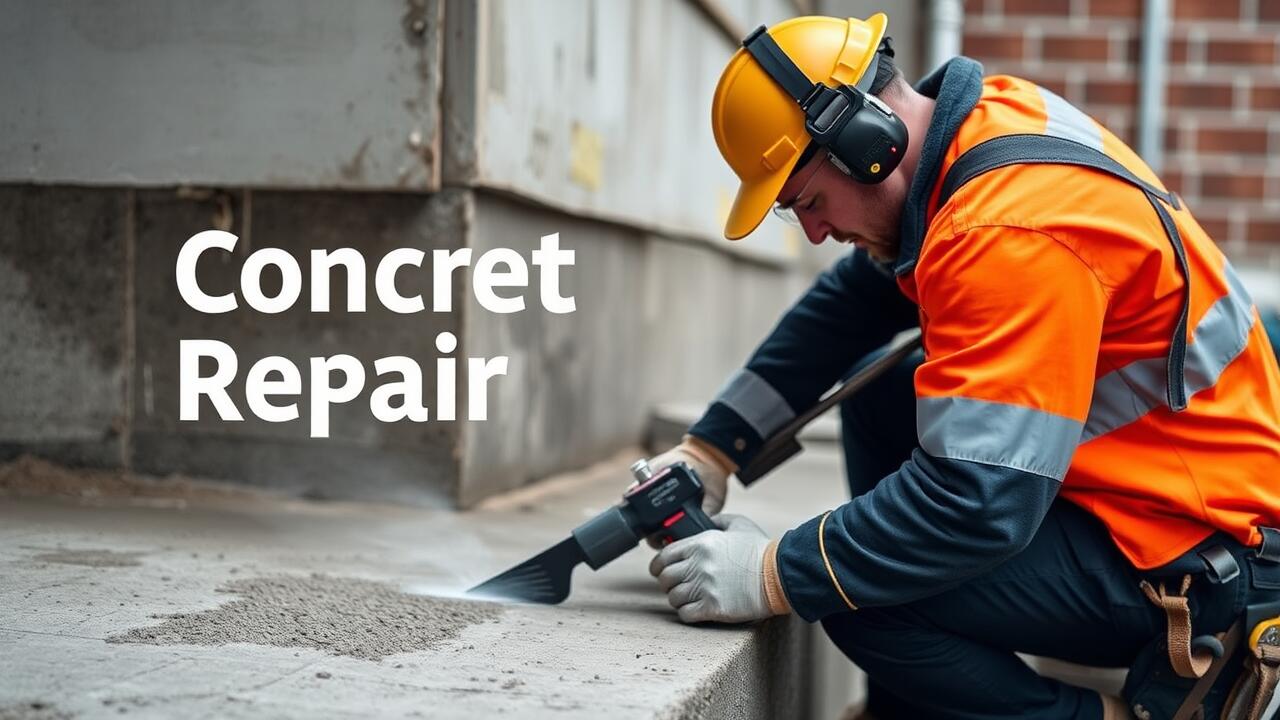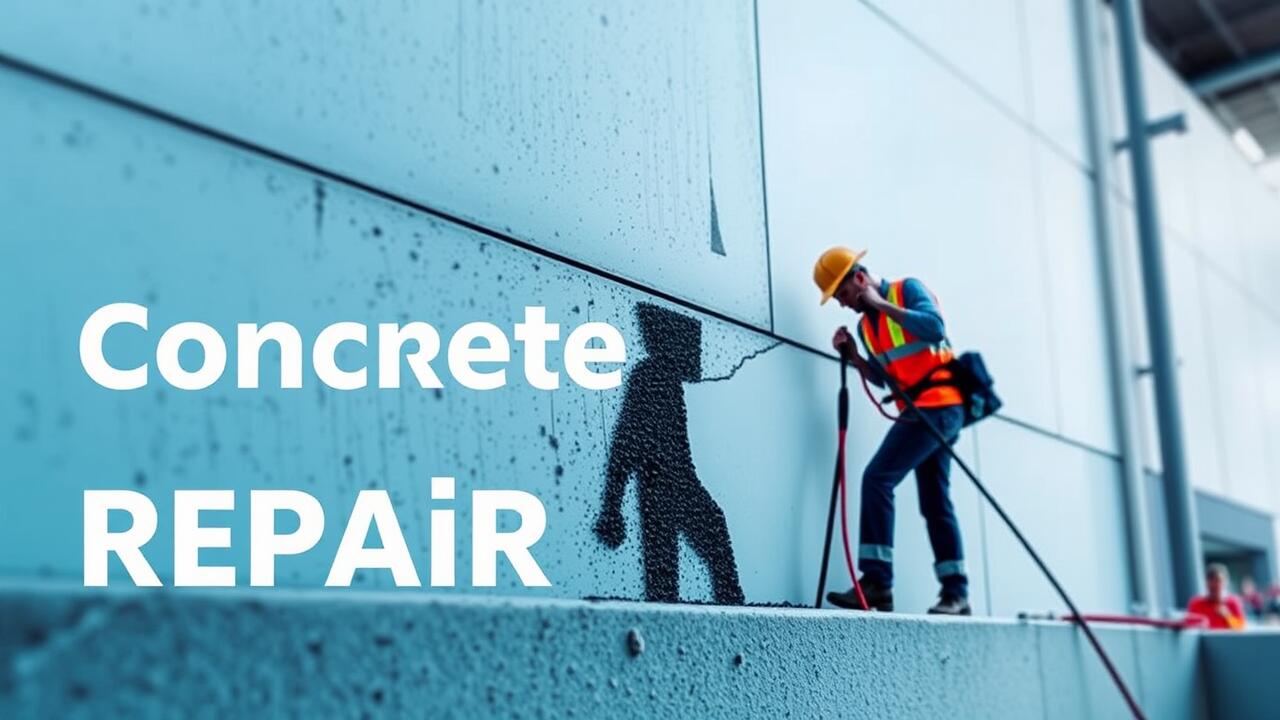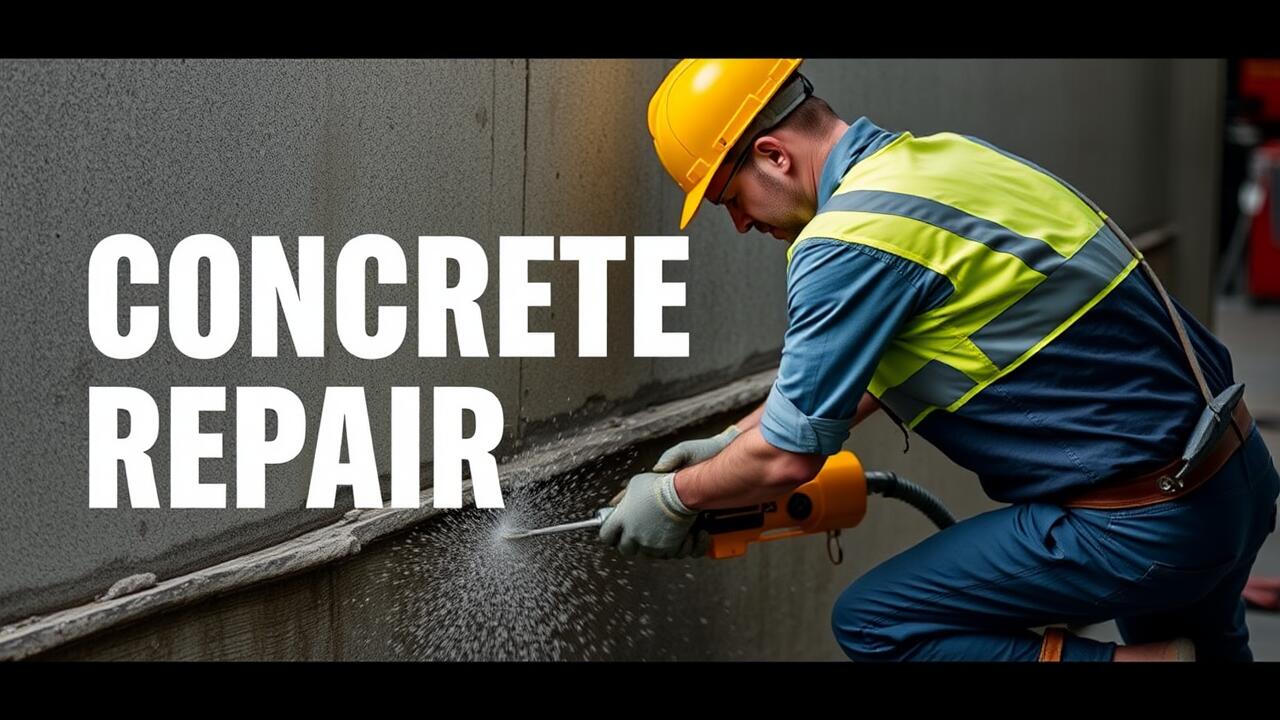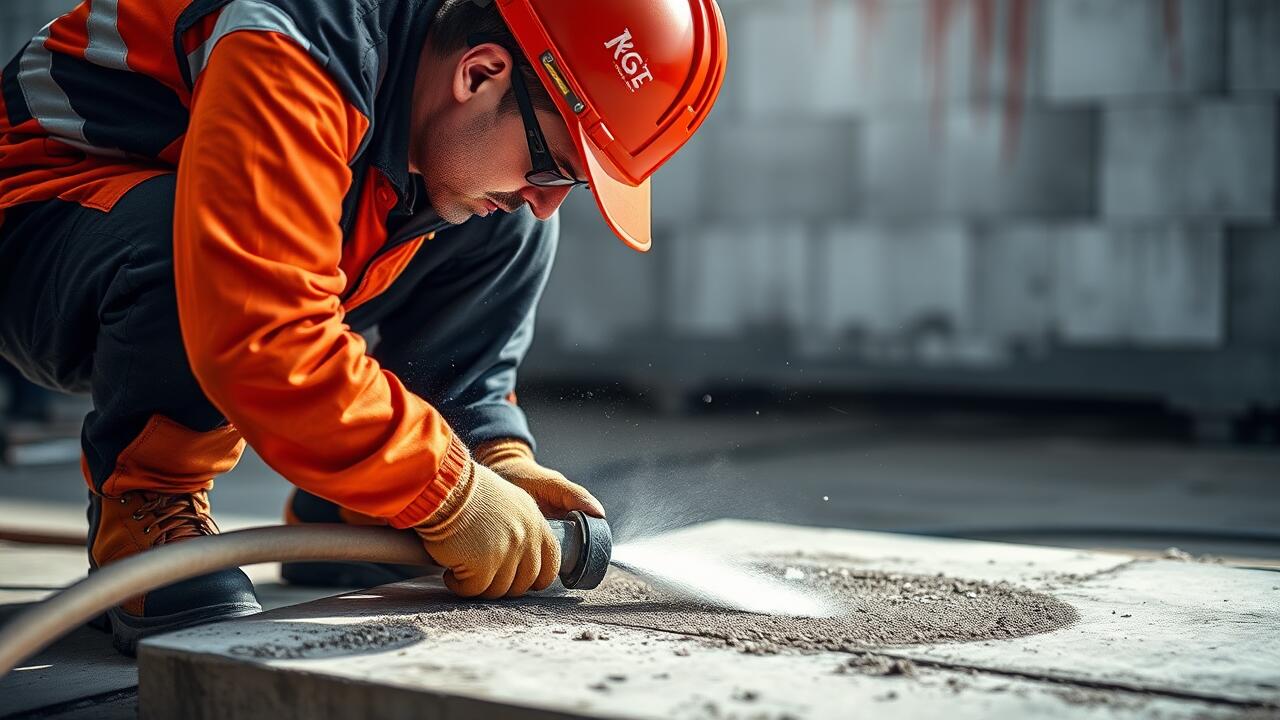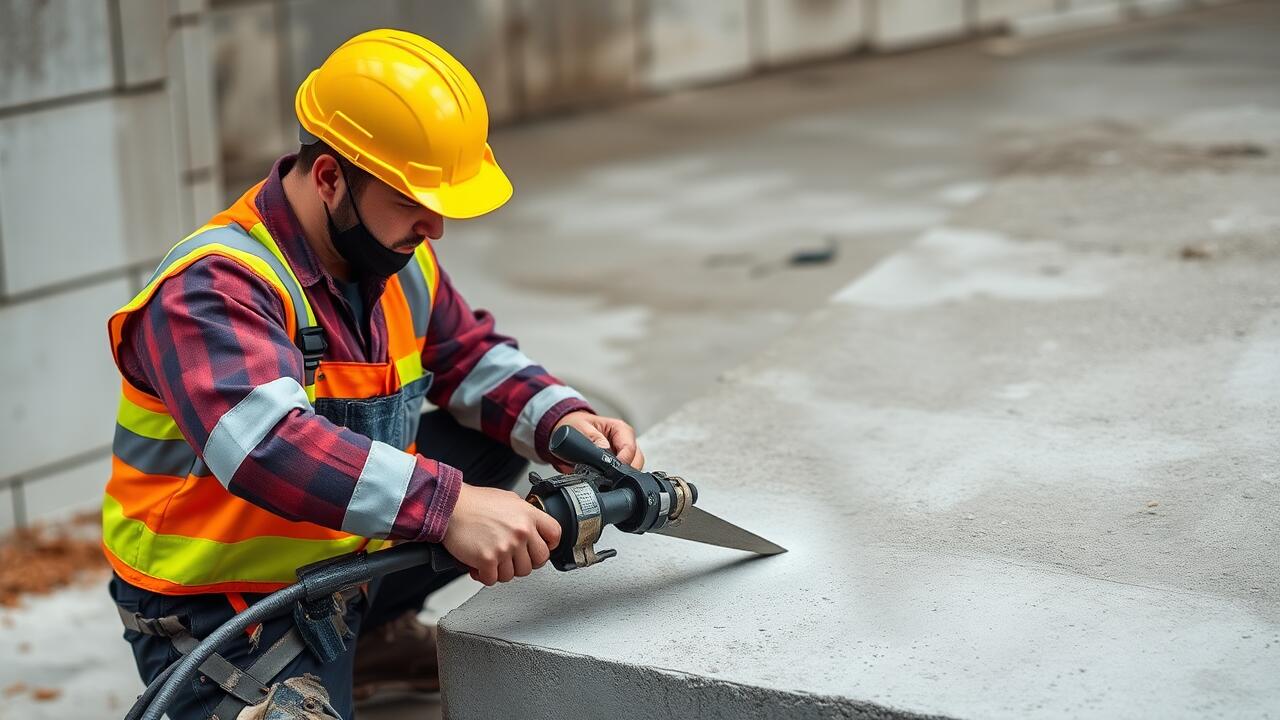
The Application Process for Joint Sealing
The application process for joint sealing requires careful preparation to ensure optimal adhesion and longevity. Surfaces must be clean and dry before sealant is applied. This includes removing debris, dirt, and old sealant from the joints. If contaminants remain, they could compromise the sealant's effectiveness and lead to premature failure.
Once the surface is prepped, the chosen sealant can be applied. Care should be taken to adhere to product specifications regarding temperature and humidity during application. Proper tools, such as a caulking gun, can improve accuracy and prevent mess. For residents seeking reliable solutions, specialized services like Concrete Repair in Phoenix offer expertise in ensuring thorough and effective application.
Steps for Effective Sealant Application
Applying sealant effectively requires careful preparation and attention to detail. Start by cleaning the joint thoroughly, removing any dirt, debris, or old sealant to ensure proper adhesion. Using a wire brush or a pressure washer can help reach tough areas. After cleaning, allow the joint to dry completely to prevent trapping moisture underneath the sealant. Choosing an appropriate sealant for the specific project is crucial, as different materials may require unique formulations.
When applying the sealant, use a caulking gun for a smooth and even application. Fill the joint consistently, ensuring that the sealant adequately penetrates without leaving gaps. Smooth the surface with a tool or your finger to ensure proper adhesion and a neat finish. For those involved in Concrete Repair in Phoenix, consider the environmental conditions such as temperature and humidity, as they can impact the curing process. Always follow the manufacturer’s instructions for the best results.
Best Practices for Maintaining Sealed Joints
Maintaining sealed joints is crucial to prolonging the lifespan of any concrete structure. Regular inspections play a vital role in identifying potential issues before they escalate. Homeowners and property managers should schedule routine checks for cracks, gaps, or signs of wear on sealed joints. Swift action can mitigate extensive damage and ensure the integrity of the concrete remains intact. Cleaning around the sealed joints helps to remove debris that can cause deterioration and allows for better visual assessment.
Choosing the right sealants is just as important as their application and maintenance. Different environments may require specific types of sealants to withstand climatic conditions or chemical exposure. Consulting with professionals experienced in Concrete Repair in Phoenix can provide valuable insights into the most effective products for local challenges. Keeping track of any changes in the performance of the sealant will help ensure that prompt maintenance actions are taken, thus extending the service life of the joints.
Regular Inspections and Cleaning
Regular inspections and cleaning of sealed joints are crucial for ensuring their longevity and effectiveness. Over time, debris, dirt, and other contaminants can accumulate in and around the joint area, compromising the sealant's integrity. These inspections should be scheduled periodically to identify any signs of wear or damage, such as cracking, peeling, or separation from the surrounding concrete. Conducting such assessments not only helps in early detection of issues but also facilitates timely maintenance, enhancing the overall durability of the concrete structure.
In areas prone to harsh weather conditions or heavy traffic, the need for consistent cleaning becomes even more apparent. Removing contaminants prevents them from penetrating the sealant and allows it to perform at its best. For those involved in Concrete Repair in Phoenix, understanding the local environmental factors can inform cleaning frequency and techniques. Utilizing appropriate cleaning agents and methods will ensure that the joints remain in good condition, thus preserving the benefits of the sealing process. Regular attention to these details will ultimately contribute to the longevity of the concrete surfaces.
Choosing the Right Sealant for Your Project
Selecting the appropriate sealant for your project involves understanding the specific needs of your concrete surface and the environmental conditions it will face. Different sealants offer varying levels of flexibility, adhesion, and durability. It is essential to evaluate factors such as temperature fluctuations, moisture exposure, and potential movement in the concrete. Local expertise, particularly in regions like Arizona, can guide you towards the best choice. Concrete Repair in Phoenix often necessitates specialized sealants that can withstand the area's unique climate challenges.
Another crucial factor is the compatibility of the sealant with existing materials. Some formulations adhere better to specific types of concrete or previously applied coatings. It's also important to consider the longevity of the sealant and its maintenance requirements. Products that require minimal upkeep are often preferable, especially for larger surfaces or areas with heavy foot traffic. Always consult with professionals to ensure that the selected sealant aligns with your long-term maintenance strategy and the conditions specific to your project.
Factors to Consider When Selecting Sealants
Selecting the right sealant for a concrete project involves several key factors that can significantly affect the performance and longevity of the repair. First, consider the specific environmental conditions in which the concrete will be located. Temperature fluctuations, moisture levels, and exposure to chemicals can all influence the sealant's effectiveness. It's essential to choose a product that is formulated to withstand the local climate and use conditions, particularly for projects requiring Concrete Repair in Phoenix, where extreme heat can lead to premature wear and failure of inferior sealants.
Another critical factor is the type of joint that needs sealing. Various sealants have been developed to cater to different types of joints, including expansion joints, control joints, and construction joints. Each type of joint may have varying movements and compressive stresses, necessitating a sealant with specific properties to accommodate these conditions. Ensure that the selected sealant offers flexibility and adhesion suitable for the joint design, as this will enhance its performance over time and provide a more durable solution for Concrete Repair in Phoenix.
FAQS
What is concrete joint sealing?
Concrete joint sealing is the process of applying a sealant to the joints in concrete surfaces to prevent water infiltration, reduce damage from freeze-thaw cycles, and extend the lifespan of the concrete.
Why is joint sealing important?
Joint sealing is important because it helps prevent the ingress of water and contaminants, minimizes cracking and spalling, and enhances the durability and longevity of concrete structures.
How often should I inspect sealed joints?
It is recommended to inspect sealed joints at least once a year to check for any signs of wear, damage, or deterioration that may require resealing or maintenance.
What factors should I consider when choosing a sealant?
When choosing a sealant, consider factors such as the type of joint, environmental conditions, the type of traffic the area will experience, and the specific properties of the sealant, such as flexibility, adhesion, and durability.
Can I seal concrete joints myself, or should I hire a professional?
While sealing concrete joints can be a DIY project for those with experience, hiring a professional is recommended for larger or more complex jobs to ensure the application is done correctly and effectively.
